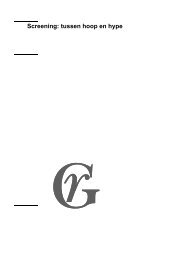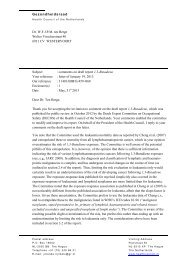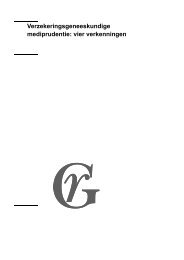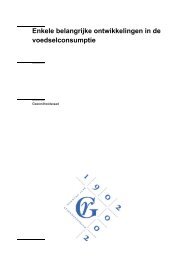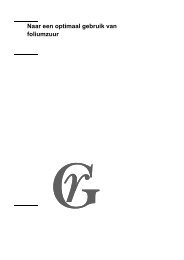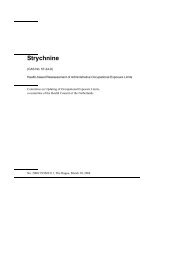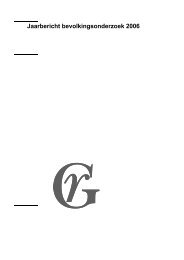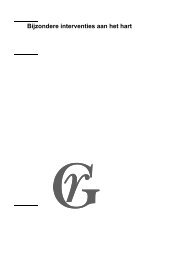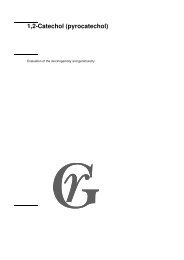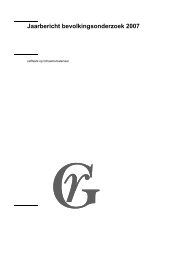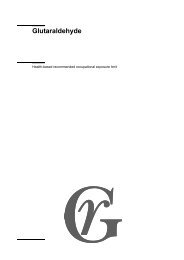Liquefied petroleum gas (LPG) - Gezondheidsraad
Liquefied petroleum gas (LPG) - Gezondheidsraad
Liquefied petroleum gas (LPG) - Gezondheidsraad
You also want an ePaper? Increase the reach of your titles
YUMPU automatically turns print PDFs into web optimized ePapers that Google loves.
Data on rats exposed to mixtures of aliphatic hydrocarbons showed that<br />
exposure to a mixture containing an estimated concentration of butane of 2950<br />
mg/m 3 did not induce an increase in the incidence of macroscopic or microscopic<br />
organ lesions. Exposure to another mixture containing an estimated<br />
concentration of butane of 5670 mg/m 3 increased the incidence of kidney lesions<br />
(hydrocarbon-induced nephropathy) when compared to controls. However, in<br />
these studies, effect levels were not identified and effects on the central nervous<br />
system, a potential target organ, were not addressed. Therefore, the committee is<br />
of the opinion that the studies cannot be used as starting points in deriving a<br />
health-based occupational exposure limit.<br />
Butane was negative in in vitro mutation assays in S. typhimurium and E. coli<br />
and in a sex-linked recessive lethal mutation assay in D. melano<strong>gas</strong>ter.<br />
The committee considers the toxicological database on butane too poor to justify<br />
recommendation of a health-based occupational exposure limit.<br />
Based on the animal data from studies with butane-containing mixtures (Ara86,<br />
Hal86), the committee concludes that there is no reason to suspect that the<br />
current occupational exposure limit of 1430 mg/m 3 (600 ppm), as an 8-hour<br />
time-weighted average, is too high.<br />
<strong>LPG</strong><br />
Apart from a few fatal cases and one case of nausea, malaise, general weakness<br />
of the lower limbs, and acute hepatitis, the committee did not find any<br />
information from reports on toxic effects of <strong>LPG</strong> in men and experimental<br />
animals.<br />
The committee considers the toxicological database on <strong>LPG</strong> too poor to justify<br />
recommendation of a health-based occupational exposure limit.<br />
Based on the available human and animal data on butane, the committee has no<br />
reason to suspect that the current administrative MAC value for <strong>LPG</strong> of 1800<br />
mg/m 3 (1000 ppm), as an 8-hour time-weighted average, is too high.<br />
References<br />
ACG02a<br />
American Conference of Governmental Industrial Hygienists (ACGIH). Liquified <strong>petroleum</strong> <strong>gas</strong>. In:<br />
Documentation of the TLVs ® and BEIs ® with other worldwide occupational exposure values. CD-<br />
ROM - 2002. Cincinnati, OH, USA: ACGIH ® , 2002.<br />
134-16 Health-based Reassessment of Administrative Occupational Exposure Limits



